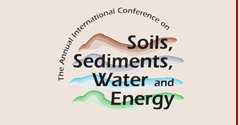Article Title
Abstract
Environmental professionals need to understand the legal issues involving MTBE-related claims and insurance coverage. Legal actions involving MTBE contamination are on the rise. Throughout the United States, litigation has included MTBE claims based on negligence, conspiracy, property damage and product liability. In April 2002, for example, after an 11–month trial brought by a California public utility against MTBE producers, oil refineries and gasoline retailers, a jury found that gasoline containing MTBE was a defective product and decided in favor of large awards to plaintiffs. As a possible harbinger of what is to come, a number of law firms now include information relating to MTBE on their websites. As MTBE–based claims increase, disputes concerning insurance coverage for those claims will also most assuredly increase. This presentation will provide a framework for helping to determine how insurance policies cover MTBE–related claims. For example, if government requirements to use MTBE result in legal actions relating to substances or commercial products exempted from Superfund liability, can insurance companies successfully deny coverage based on a pollution exclusion? Standard liability insurance forms generally provide coverage for damage to the environment arising from MTBE. First, the large majority of jurisdictions that have addressed the issue of the “legal obligation to pay” hold that amounts paid to address government mandates in administrative enforcement actions are amounts which the policyholder “is legally obligated to pay as damages.” Therefore, costs to investigate and remediate MTBE contamination in response to a government directive should be construed “as damages” which a policyholder is legally obligated to pay. Second, environmental contamination arising from gasoline containing MTBE is “property damage” and courts uniformly hold so. Such damage generally is to the property of a third–party because most states designate groundwater as a resource held in trust for all people so actual or potential threats to groundwater from MTBE are considered damage to the property of another. Third, “property damage” takes place or “triggers” coverage as long as the gasoline spill or leak was released into the environment at least, in part, during the policy period(s) at issue. To deny insurance coverage for MTBE–related environmental damages, the insurance companies have (with varying degrees of success) relied upon: (1) the “expected or intended”/no “occurrence” defense; and (2) various forms of “pollution” exclusions. Policyholders should be sure this fine print actually applies before taking “no coverage” for an answer. While coverage for MTBE–related liabilities will not come easily, policyholders and environmental professionals need to know what evidence is necessary to support a claim for MTBE coverage.
Recommended Citation
Ellison, John N. ESQ and Nevius, John G. ESQ., P.E.
(2010)
"MTBE: Coverage For This "Spreading" Problem,"
Proceedings of the Annual International Conference on Soils, Sediments, Water and Energy: Vol. 11, Article 11.
Available at:
https://scholarworks.umass.edu/soilsproceedings/vol11/iss1/11
